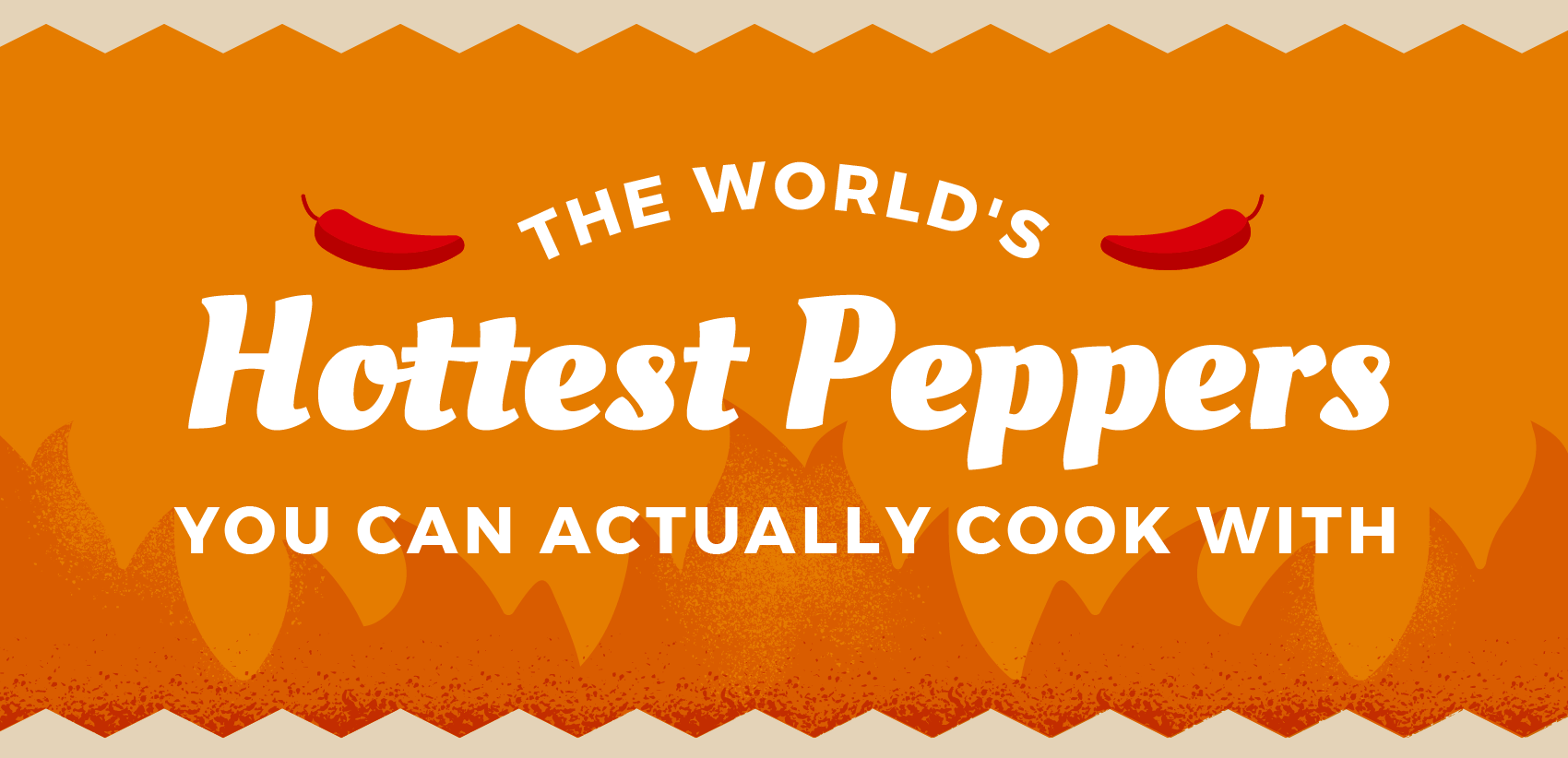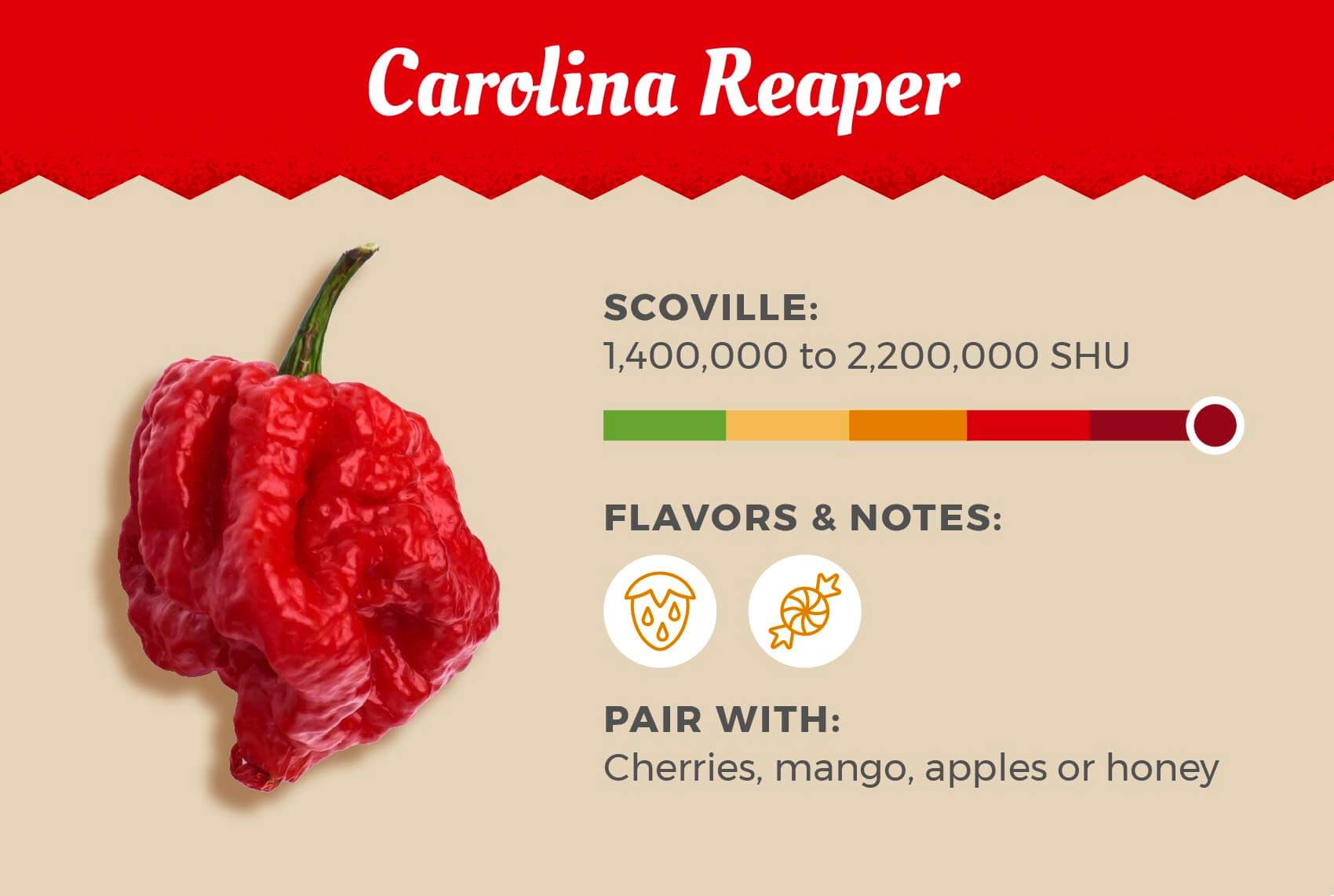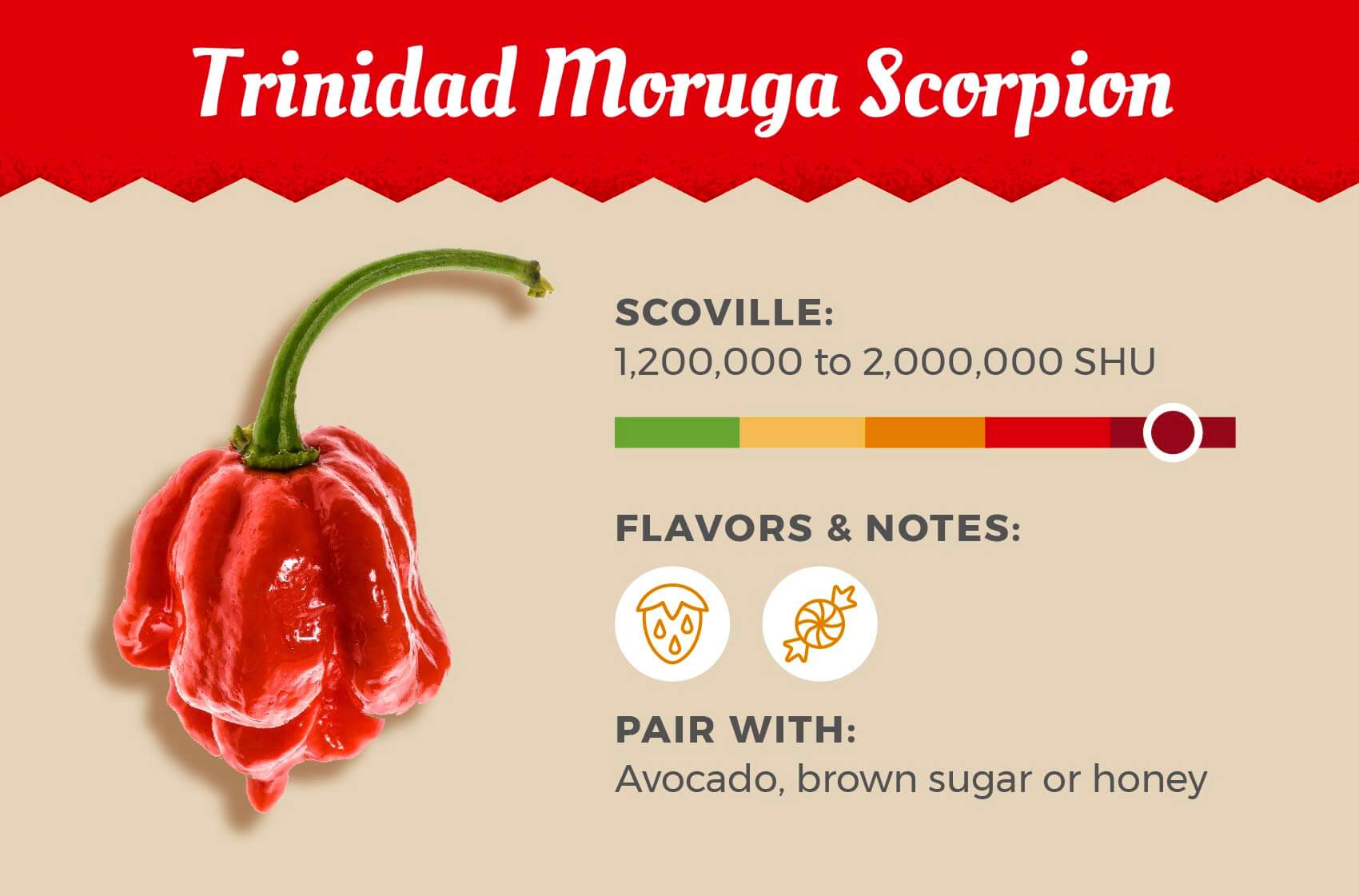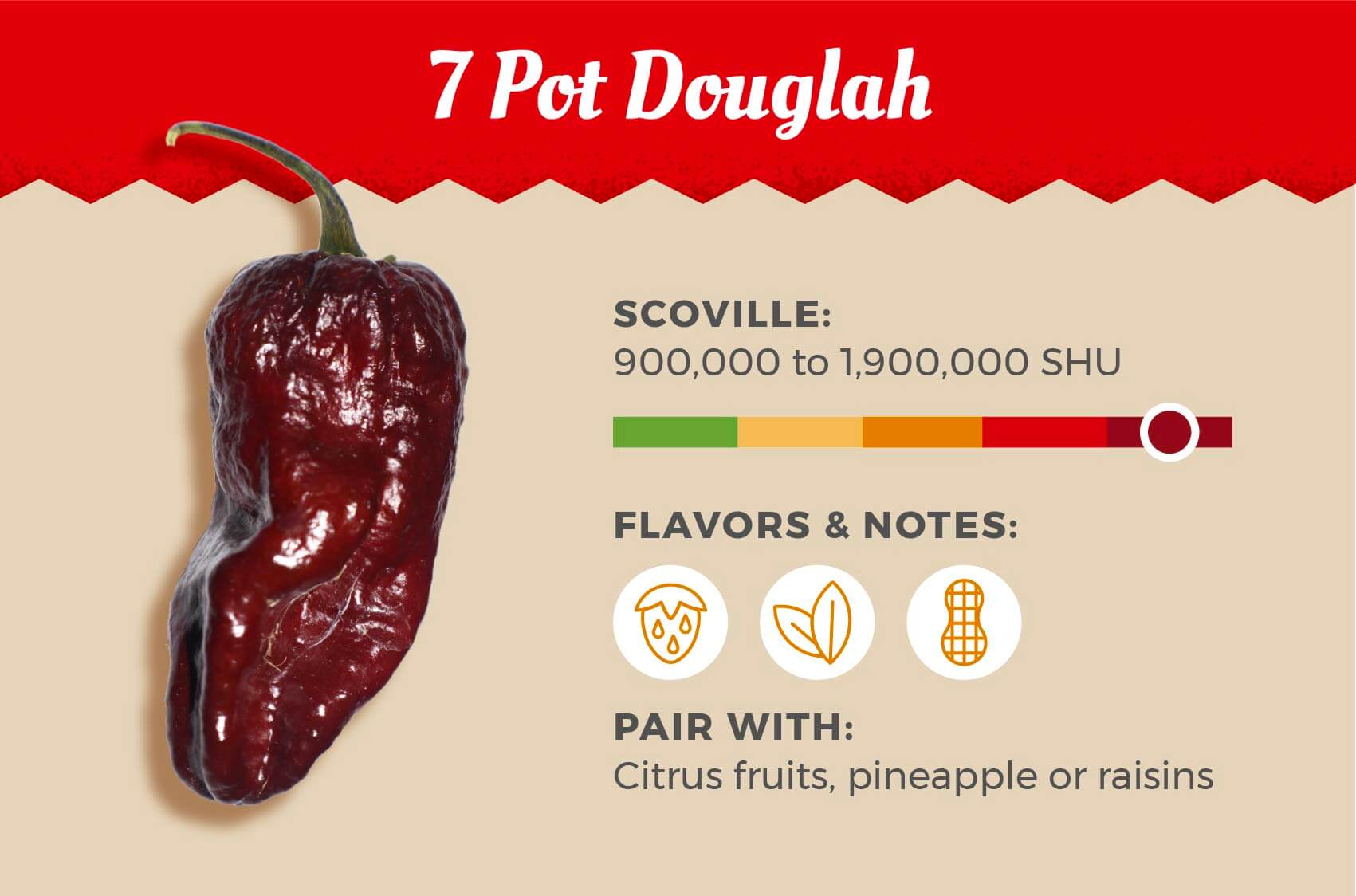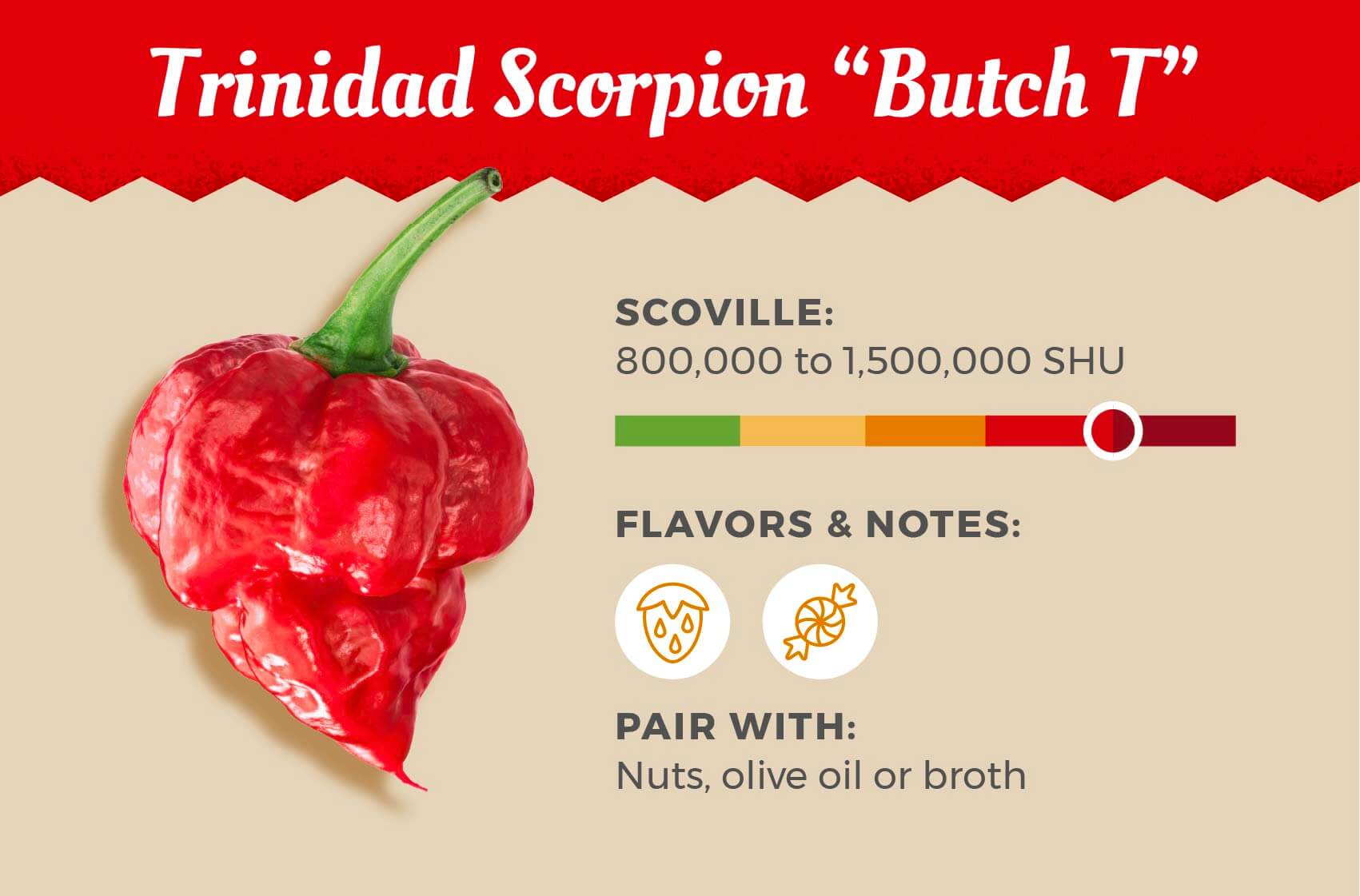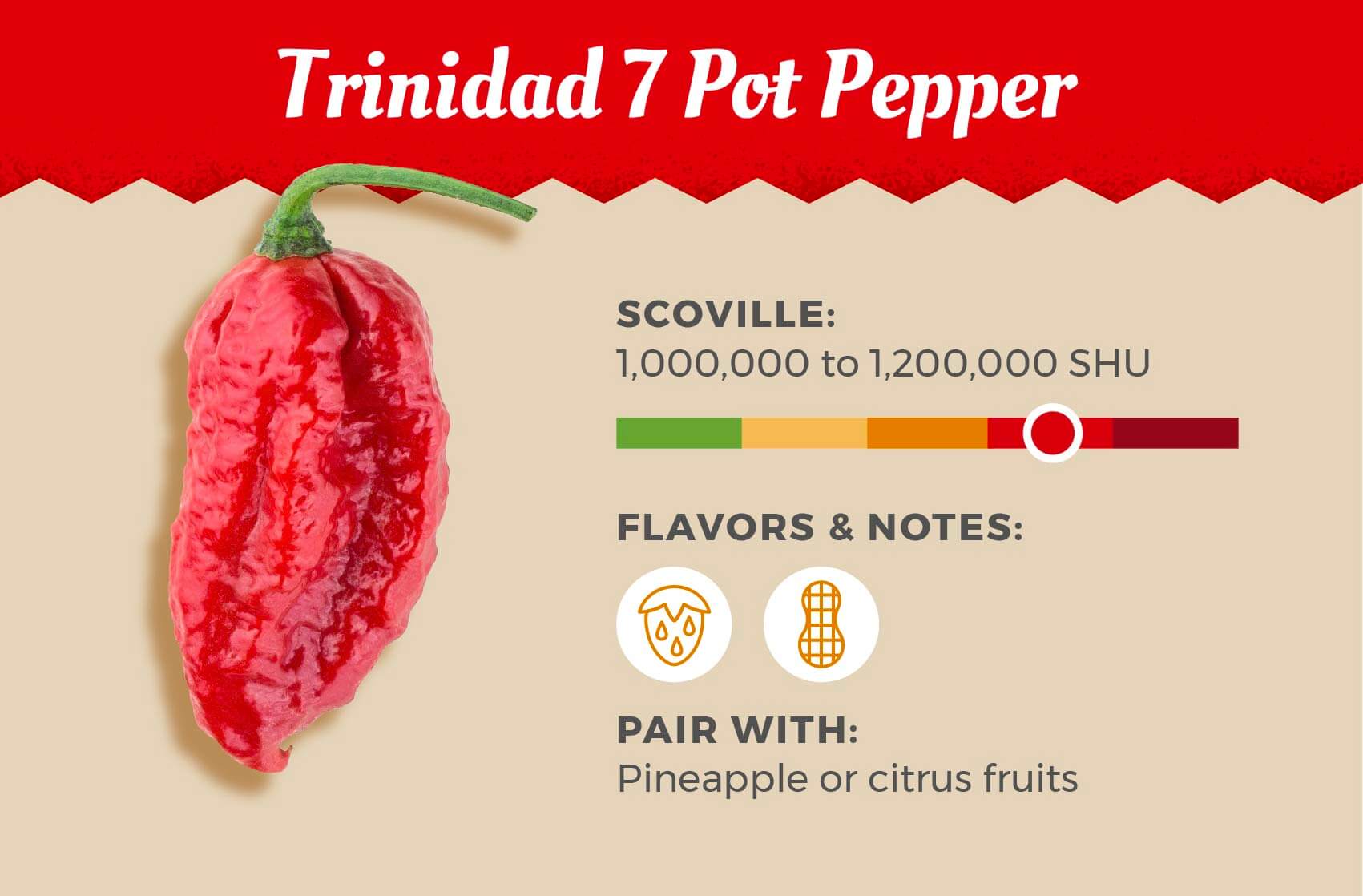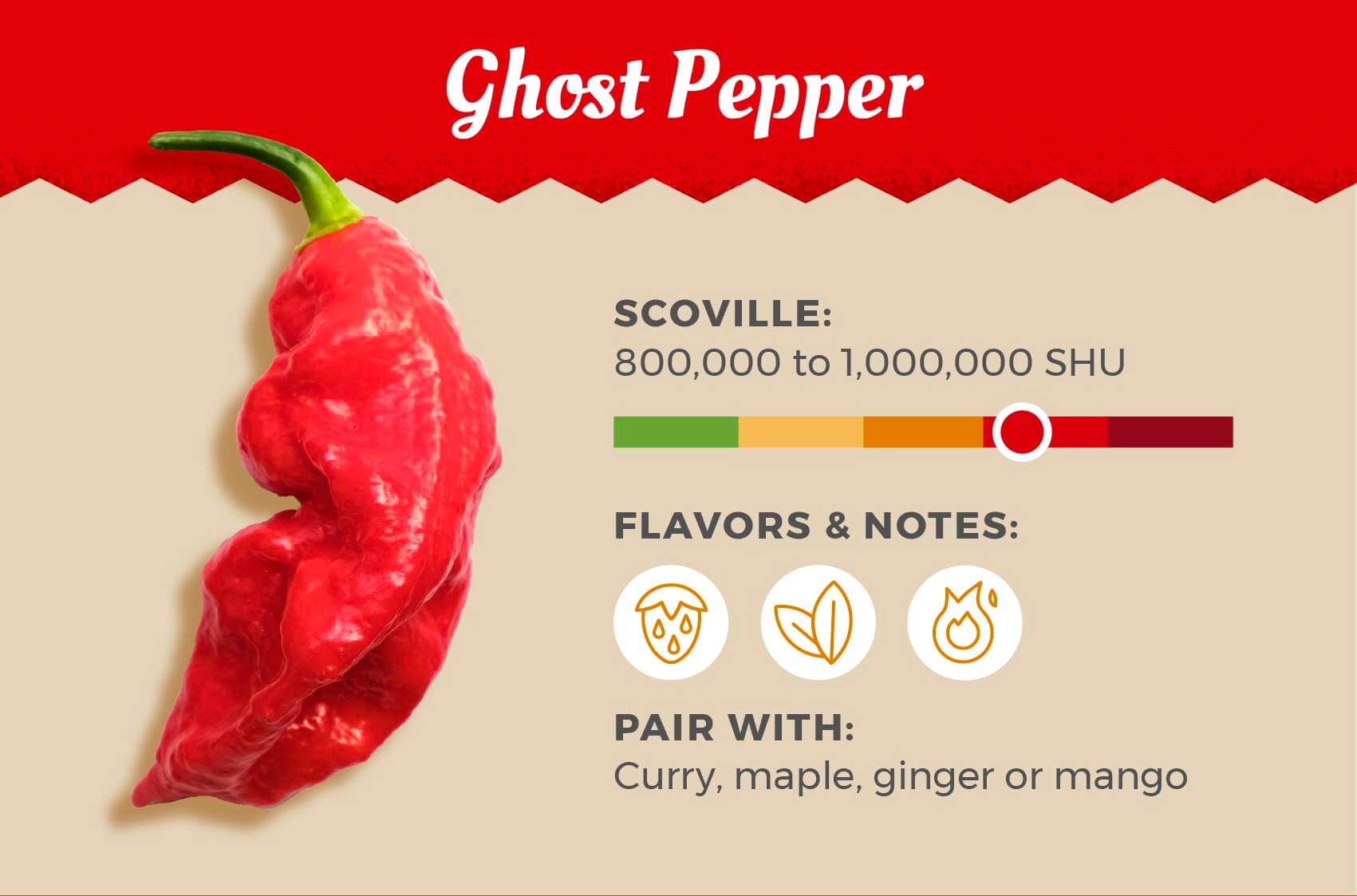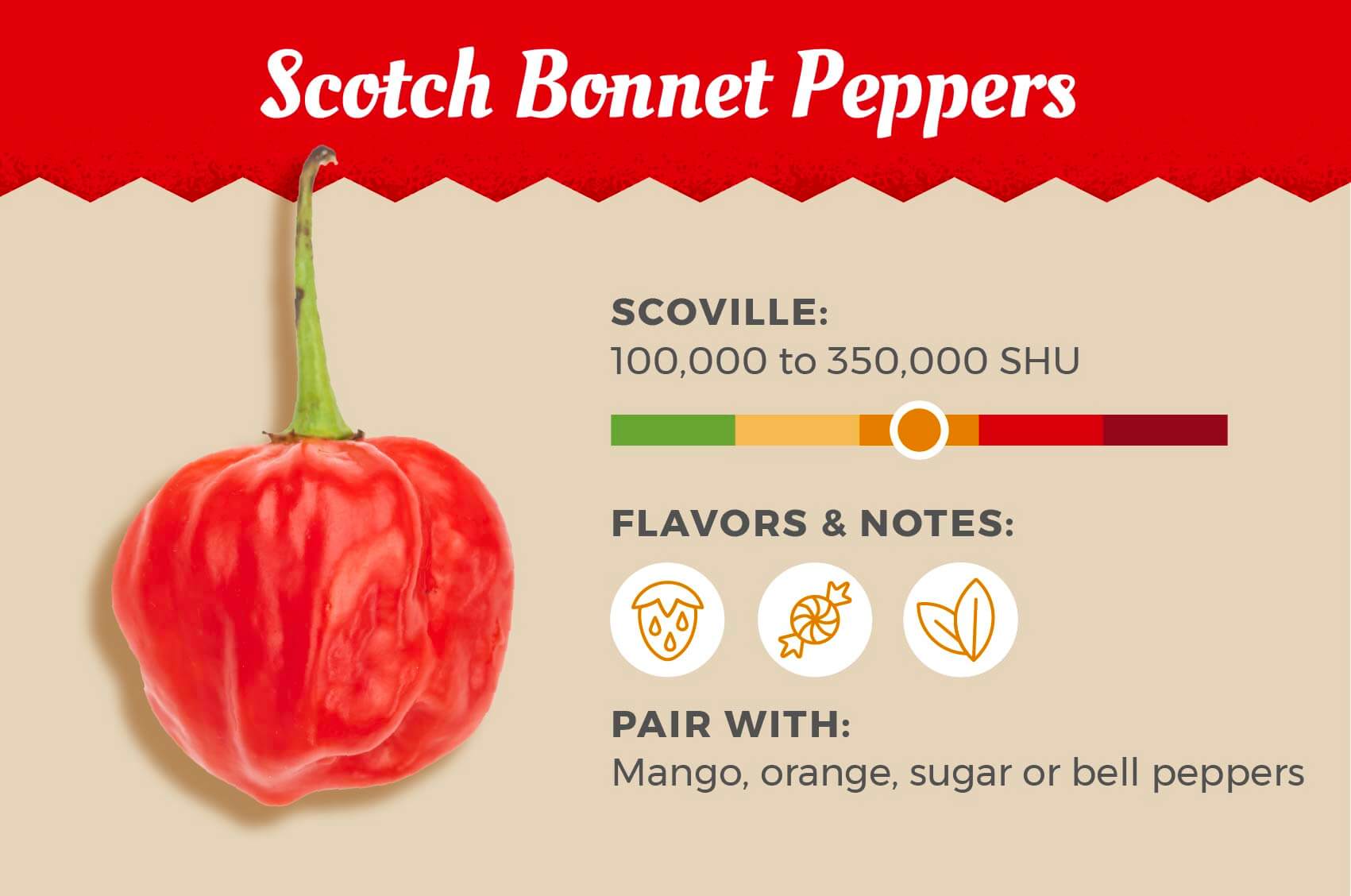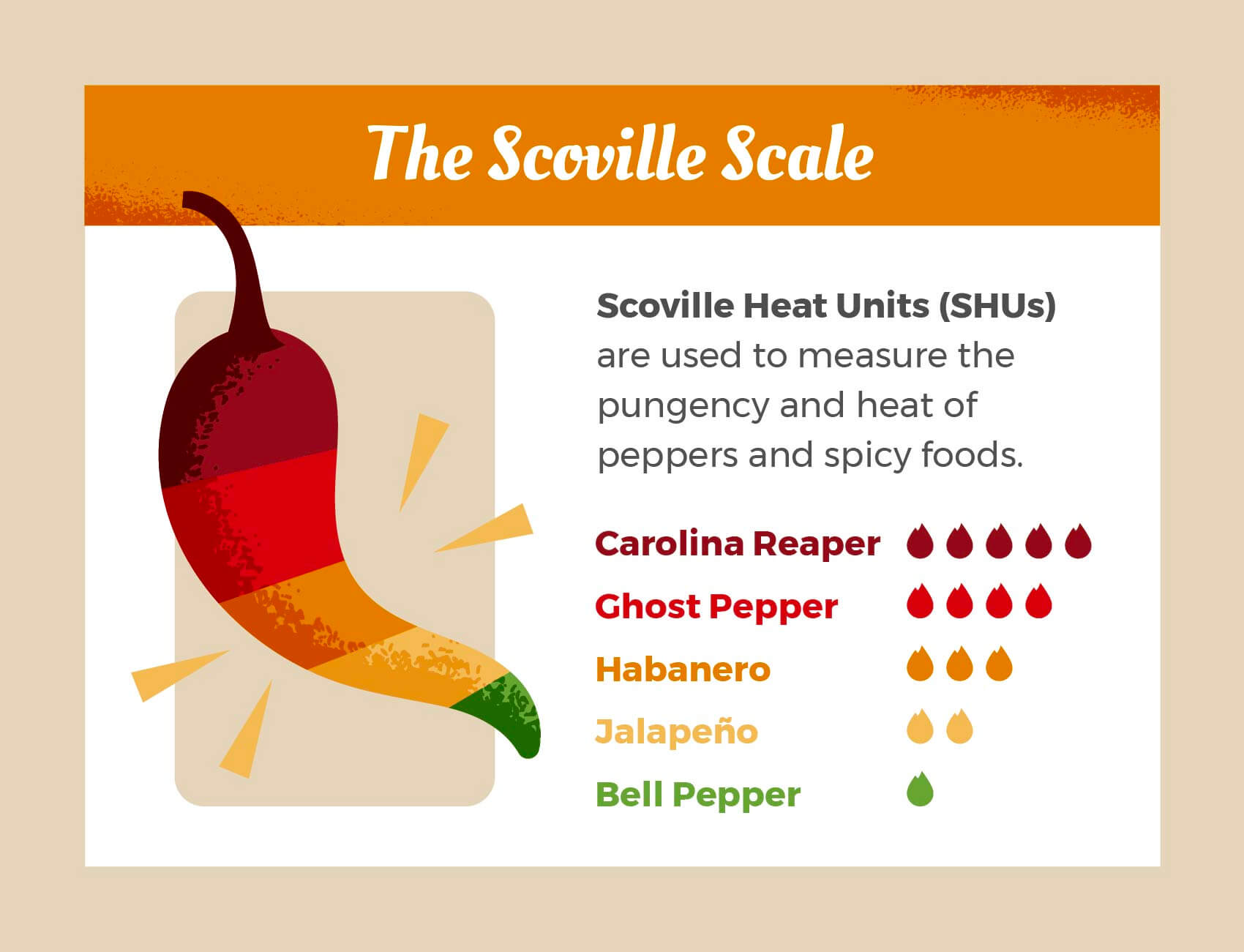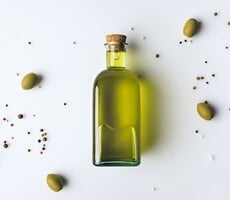Spicy food fanatics are always looking for their next tongue-burning, yet delicious meal. But with everyone staying in and cooking the majority of their meals at home, learning how to use peppers and chilies to add flavor to some of our favorite recipes will help curb our cravings and even have a bit more fun in the kitchen.
For every spicy food lover out there, we've gathered some of the world's tastiest and hottest peppers to use in your next meal or hot sauce — proceed with caution. Check out where they rate on the Scoville scale (the scale used to measure the pungency and heat of peppers), ingredients to look for to pair with recipes, and tips on how to incorporate them into your cooking.
The Hottest Peppers You Can Cook With
Eating spicy food comes with a lot of health benefits, which you can read all about below. And in case you overdo it on the heat, we also include a few tips on how to lower the burn. Although Pepper X and Dragon's Breath Pepper currently top the lists of the world's hottest peppers, below we included extremely fiery peppers that you can still cook with — when used cautiously and in small amounts. Here are the nine hottest peppers you can actually cook with.
1. Carolina Reaper
1,400,000 to 2,200,000 SHU
The Carolina Reaper has topped the Guinness Book of World Records as the world's hottest pepper for nearly a decade. This extremely hot pepper from the South can sometimes be even hotter than pepper spray so it must be handled with gloves when cooking.
It's surprisingly sweet flavor makes it great for super hot yet tasty sauces. Combine with sweet and tart flavors like cherries, mango, apples or honey for marinades, chili and salsas.
2. Trinidad Moruga Scorpion
1,200,000 to 2,000,000 SHU
Nearly 20 times hotter than a Habanero, the Trinidad Moruga Scorpion will definitely set your tongue on fire. A small sliver of this pepper is enough to give your sauces and barbecues the kick you're looking for — and probably more.
Pair it with tangy or sweet flavors like tomatoes, blueberries, and garlic to make chili oils, spice rubs, jams, and guacamole.
3. 7 Pot Douglah
900,000 to 1,900,000 SHU
Known for lacking the typical bright red color of most super-hot chilies, the darker red almost chocolate-colored 7 Pot Douglah delivers quite a complexity of flavors. With nutty and fruity notes, it's the perfect spicy pepper to add to your favorite soup recipes or stews.
To make salsa, try pairing with citrus fruits, pineapple or raisins to reduce the heat and increase flavor.
4. Naga Morich
1,000,000 to 1,500,000 SHU
Naga Morich peppers have enticed adventurous eaters and spicy food lovers all over the world. It's cultivated in Northeast India and Bangladesh and often served as a scorching side dish or relish — which should be consumed with caution.
As it starts fruity and ends with a fiery buildup, it's perfect for barbecues and sweet and spicy salsas or marinades. It's also a great pepper to dehydrate and grind to make chili pepper.
5. Trinidad Scorpion "Butch T"
800,000 to 1,500,000 SHU
This particular strain of scorpion peppers was created by Butch Taylor in Crosby, Mississippi. Just like the scorpion, these types of peppers are known for their fast-stinging heat so although they have some fruitiness in terms of flavor, the burn quickly comes in and overpowers any flavorful notes.
To bring out some of the flavors in the Trinidad Scorpion "Butch T," be sure to pair it with nutty or salty flavors like peanut butter and chicken broth or use to infuse olive oil.
6. Trinidad 7 Pot Pepper
1,000,000 to 1,200,000 SHU
All 7 pot peppers get their name from the fact that one single pepper is enough to spice up to 7 pots of stew — and the Trinidad 7 Pot Pepper is the perfect example. This pepper is on our list because it's not only scorching hot, but it's one of the most flavorful of its kind.
Its Caribbean roots and flavors make it a great pepper to use for tropical fruity salsas that include ingredients like pineapple and citrus fruits.
7. Ghost Pepper
800,000 to 1,000,000 SHU
Although Ghost Peppers are one of the most common and widely known varieties on the super-hot lists, they still pack a pretty deadly punch. On average, Ghost Peppers are about 400 times hotter than a jalapeño so it's important to always handle these peppers with care.
It has a much slower buildup than scorpion peppers so when added to your recipes, you might be able to taste its fruity and even smoky notes before the fire sets in. Because of its popularity, you'll be able to find plenty of recipes combining these peppers with curry, maple marinades, jelly and dipping sauces.
8. Red Savina Habanero
350,000 to 577,000 SHU
Much spicier than the typical orange habanero varieties, Red Savina Habanero peppers are perfect to spice up any recipe. It was created by Frank Garcia in Walnut, California and it's commonly used to make police-grade pepper spray.
In much smaller quantities, however, this pepper can add so much flavor to your next dish. It has a strong fruity taste, as most habaneros do, which is great to use for jams, sauces, jellies, and marinades. Pair it with ingredients like nectarine, tamarind, brown sugar and even chocolate.
9. Scotch Bonnet Peppers
100,000 to 350,000 SHU
Last but certainly not mild, are the infamous Scotch Bonnet Peppers. This colorful pepper is the reigning favorite in Caribbean recipes and with reason. With such fruity notes like apples and cherries, you'll often find this pepper used in hot sauces, as pepper flakes or in traditional Caribbean jerk chicken recipes.
It'll make for a delicious addition if you mix it to recipes that have sweet or mild flavors like mango, orange, sugar or bell peppers.
Benefits of Eating Hot Peppers
Although super-hot peppers are consumed in very small amounts, if you enjoy incorporating mild to moderately hot peppers into your recipes as well, below are some benefits thought to be associated with eating peppers and spicy foods.
1. Helps You Live Longer
A study conducted in 2015 found that eating a spicy dish once a day or at least six times per week, lowers mortality rates by 14 percent. Another study showed that eating red chili peppers lowers LDL cholesterol levels and is even associated with a 13 percent decrease in deaths from heart disease.
2. Speeds Your Metabolism
Studies have found that many spices, including chili, have been found to increase our metabolic resting rate, body temperature, energy expenditure and even suppress appetite. For those who have weight loss goals, adding peppers into your diet is a great way to get your metabolism fired up.
3. Provides Antioxidants
A diet high in antioxidants can help the body defend against free radicals. When free radicals accumulate in the body, it can lead to chronic diseases including heart disease, autoimmune disorders and cancer. Red peppers are known for being a good source of antioxidants including Capsanthin, which studies have shown to have promise fighting against tumors and colon carcinogens.
4. Helps with Pain Relief
Eating chilies regularly has been found to provide desensitization and pain relief for those with acid reflux and heartburn. Used topically, capsaicin has also shown promise in pain management for those suffering from arthritis.
5. Acts as Antimicrobial for Your Gut
Cravings for spicy food have been proven to be more than just personal taste or preference. In fact, according to research by Cornell University, our taste for certain flavors can be attributed to genetics. Capsicums like chilies and hot peppers are great antimicrobials for our gut and have provided people with protection against harmful food-borne bacteria and fungi throughout many centuries and cultures.
What is the Scoville Scale?
The Scoville scale and the Scoville Heat Unit (SHU) are used to measure the pungency and heat of peppers, chilies, and other spicy foods. It measures the concentration of capsaicin which is the active component of chili peppers that causes that burning sensation in our tongues — or any tissue it touches if it's really spicy.
For reference, below are some popular peppers and spicy items on the Scoville scale:
- Bell Peppers: 0 SHUs
- Jalapeños: 3.5K to 8K SHUs
- Habanero: 200K to 350K SHUs
- Carolina Reaper: 1.2M to 2.2M SHUs
- Pepper Spray: 2M to 5.3M SHUs
- Pure Capsaicin: 15M SHUs
What to Do If You Can't Stand the Heat?
When the heat gets a little too much to handle, there are a few things you can do to help reduce those painful stinging sensations. The first step is to dissolve the capsaicin in your tongue or wherever your skin came in contact with a super-hot pepper — and that's with milk fat, acid or sugar.
Although water may alleviate some of the pain, milk fat actually breaks down capsaicin, providing much faster relief. Things like whole milk, yogurt, cottage cheese or other dairy products work great. If the spice comes in contact with your eyes or skin, mix high-fat milk with sugar or honey and dab the skin with a soaked cloth.
For those who don't eat dairy, acids like vinegar, lemon or lime can also help bring down the heat. Many claim that nut and seed butters work as well.
Tips to Cook and Incorporate
These Peppers Into Your Diet
Tips to Cook and Incorporate These Peppers Into Your Diet
Follow these tips below to make sure you're handling super-hot peppers properly and safely adding them to your recipes
1. Use Rubber Gloves
Many extremely hot peppers can cause skin burns if not handled with care. Be sure to wear gloves, wash your hands thoroughly and avoid touching your face.
2. Deseed and Dilute
You only need a small sliver of a super-hot pepper to spice up a dish. Consider diluting it by making large batches of broth or using very small amounts and saving the rest for later. Removing the seeds and insides of your chilies can help bring down the heat as well.
3. Pair with the Right Flavors
Look up recipes that combine both your favorite spicy pepper and suitable flavor pairings to enhance flavor. Use our guide to get some ideas on the best ingredients to pair each super-hot pepper with.
4. Bring Down the Heat
The best way of bringing down the heat of a super-hot pepper is by mixing in acidic food or liquid, nuts, broth, dairy or sugar.
5. Check Your Dietary Restrictions
Peppers are great to add in almost any diet. However, some peppers might be higher in carbs making them unsuitable for keto or they're considered to be nightshade food which can be discouraged in paleo diets.
Whether hot peppers are a staple food in your culture or you're the daredevil of the family, your dishes are about to get hot. For true spicy food enthusiasts, don't be afraid to play with different flavors and ingredients to add that much-appreciated kick to your recipes.






